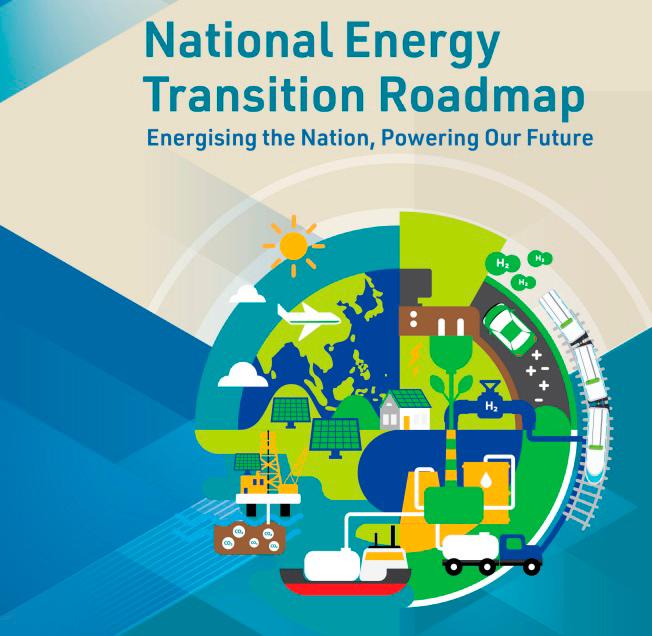THE National Energy Transition Roadmap (NETR) is the blueprint for Malaysia’s transition to a clean energy, low-carbon economy and is divided into two parts.
Part 1, announced in July, stipulates the 10 flagship catalyst projects and initiatives based on six energy transition levers – energy efficiency (EE); renewable energy (RE); hydrogen; bioenergy; green mobility; and carbon capture, utilisation and storage (CCUS).
Part 2, which was announced a month later, expanded on the six energy transition levers in Part 1, with the introduction of, among others, five enablers. This is the focus of the article.
Lever 1: Energy Efficiency
The government is championing EE as an important energy transition lever as resource optimisation will enhance cost efficiency and is a viable long-term solution to the current energy crises. The government’s initiatives include enforcing mandatory audits for large commercial and industrial buildings; and establishing a platform to coordinate public building retrofits and to streamline funding mechanisms for that purpose.
The NETR aim is to attain energy savings of 22% by 2050.
Lever 2: Renewable Energy
Energy transition from Malaysia’s current energy regime to low emission RE is the backbone of the NETR. The government has a lofty target of 70% RE installed capacity by 2050 and has pledged not to develop any new coal plants.
To address issues affecting the RE sector – notably uncertainties surrounding profitability, regulatory barriers, policy inconsistencies and infrastructure constraints or grid limitations – the government initiatives include the establishment of solar parks to achieve scalability and efficiency; the proposed establishment of an RE exchange hub to enable cross-border RE trading; and the potential development of a third-party access framework for utilisation by private players of the grid system.
Lever 3: Hydrogen
Sarawak leads the pack in Malaysia with its Japanese and South Korean collaborations to harness the potential of hydrogen as an alternative energy source. The NETR proposes to phase out the use of grey hydrogen as feedstock by 2050; to produce up to 2.3 Mtpa of green hydrogen by 2050; and to establish one low-carbon hydrogen hub by 2030 for domestic use, and two additional hubs by 2050, mainly for export purposes.
The government will therefore introduce low-carbon hydrogen standards and regulations and reduce levelised cost of hydrogen by establishing hydrogen hubs and offering financial incentives.
Lever 4: Bioenergy
Bioenergy is expected to play a key role in the energy transition framework as a carbon-neutral energy source, especially using agriculture and municipal-related waste. The government aims to expand the country’s biorefinery capacity to 3.5 billion litres by 2050 and increase biomass and biogas power generation capacity of 1.4 GW by 2050.
The NETR is pioneering several methods including exploring alternative bioenergy feedstock like bamboo and algae; facilitating biomass clustering and scaling-up used cooking oil collection to address supply security issues; and improving solid waste management policies.
Lever 5: Green Mobility
In 2019, the transport sector was the third-highest contributor of greenhouse gas emissions in Malaysian greenhouse gas emissions by sector, For land transport, the NETR aims to reduce greenhouse gas emissions by pushing for public transport modal share to reach 40% by 2040, and 60% by 2050; to increase local EV manufacturing capabilities and share of local vehicle fleet.
The NETR also has ambitious goals for the aviation industry – to achieve net-zero carbon emissions for international aviation by 2050.
Lever 6: CCUS
Although still in its fledgling state, CCUS is anticipated to play a major role in achieving net-zero emissions in the energy sector.
The government aims to develop three CCUS hubs – two in Peninsular Malaysia and one in Sarawak – with total storage capacity of up to 15 Mtpa; and to develop three carbon capture hubs with total storage capacity of between 40 and 80 Mtpa by 2050.
With the introduction of the NETR, the government has reaffirmed its commitment towards achieving carbon-neutral status by as early as 2050, taking a leap forward into harnessing the energy of the future. The alternative energy sector is complex and highly regulated, be it at national or local level and interested parties should seek legal advice to ensure a fruitful foray into the sector.
This article is ontributed by Nicole Lai of Christopher & Lee Ong (www.christopherleeong.com).









